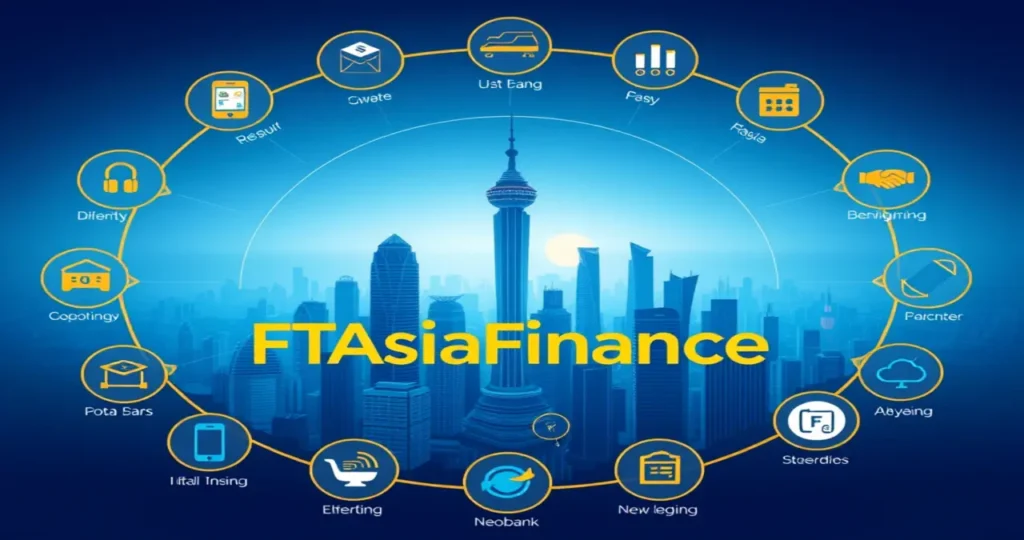Business Trend FTAsiaFinance: The Role of Policy Changes in Economic Growth

In today’s rapidly evolving global economy, staying ahead of business trends is crucial for investors, entrepreneurs, and policymakers alike. One of the most significant drivers of economic growth in Asia is the interplay between policy changes and business trends. This article delves into the keyword “Business Trend FTAsiaFinance” and explores how policy changes are shaping economic growth across the region. From regulatory reforms to fiscal incentives, we’ll examine the transformative impact of these policies and their implications for businesses and investors.
Understanding Business Trend FTAsiaFinance

Business Trend FTAsiaFinance refers to the evolving financial and economic landscape in Asia, as analyzed and reported by Financial Times Asia (FT Asia). This keyword encapsulates the latest developments, market shifts, and investment opportunities in one of the world’s most dynamic regions. Asia’s economic growth is fueled by a combination of innovation, globalization, and strategic policy changes, making it a focal point for global business trends.
As Business Trend FTAsiaFinance continues to emerge as a global economic powerhouse, understanding the role of policy changes is essential for leveraging opportunities and mitigating risks. Governments across the region are implementing reforms to attract foreign investment, boost domestic industries, and address challenges such as climate change and income inequality. These policies are not only reshaping local economies but also influencing global business trends.
The Importance of Policy Changes in Economic Growth
Business Trend FTAsiaFinance Policy changes are a cornerstone of economic development. They create the framework within which businesses operate, influencing everything from market entry to operational costs. In Asia, governments are increasingly adopting proactive policies to stimulate growth, enhance competitiveness, and address socio-economic challenges.
Here are some key ways policy changes drive economic growth:
1. Attracting Foreign Direct Investment (FDI)
Governments in Asia are rolling out policies to attract foreign investors. Business Trend FTAsiaFinance For instance, countries like Vietnam and Indonesia have introduced tax incentives, streamlined regulatory processes, and improved infrastructure to create a business-friendly environment. These measures not only boost FDI but also foster job creation and technology transfer.
2. Promoting Innovation and Digital Transformation
Business Trend FTAsiaFinance Policy changes aimed at fostering innovation are transforming Asia’s economic landscape. For example, Singapore’s Smart Nation initiative and South Korea’s Digital New Deal are driving the adoption of advanced technologies such as artificial intelligence (AI), blockchain, and the Internet of Things (IoT). These policies are positioning Asia as a global leader in the digital economy.
3. Enhancing Trade and Regional Integration
Trade policies play a critical role in economic growth. Business Trend FTAsiaFinance The Regional Comprehensive Economic Partnership (RCEP), the world’s largest free trade agreement, is a prime example of how policy changes are boosting trade and investment flows across Asia. By reducing tariffs and standardizing regulations, RCEP is creating new opportunities for businesses and strengthening regional integration.
4. Addressing Environmental and Social Challenges
Business Trend FTAsiaFinance Sustainability is becoming a key focus for policymakers in Asia. Countries like China and India are implementing green energy policies to reduce carbon emissions and combat climate change. Similarly, social policies aimed at reducing income inequality and improving healthcare are contributing to long-term economic stability.
Case Studies: Policy Changes Driving Economic Growth in Asia
To better understand the impact of policy changes, let’s examine a few case studies from across Asia:
1. China’s Dual Circulation Strategy
China’s Dual Circulation Strategy is a policy framework aimed at boosting domestic consumption while maintaining international trade. Business Trend FTAsiaFinance By focusing on self-reliance and innovation, China is reducing its dependence on foreign markets and creating new opportunities for domestic businesses. This policy is reshaping global supply chains and influencing business trends across Asia.
2. India’s Production-Linked Incentive (PLI) Scheme
India’s PLI scheme is designed to boost manufacturing and attract foreign investment. By offering financial incentives to companies in sectors like electronics, pharmaceuticals, and renewable energy, India is positioning itself as a global manufacturing hub. This policy is driving economic growth and creating millions of jobs.
3. Vietnam’s Economic Reforms
Vietnam’s Doi Moi (Renewal) policy has transformed the country from a low-income economy to a middle-income powerhouse. By liberalizing trade, privatizing state-owned enterprises, and improving the business environment, Vietnam has attracted significant FDI and achieved rapid economic growth.
4. Singapore’s Green Plan 2030
Singapore’s Green Plan 2030 is a comprehensive policy framework aimed at achieving sustainable development. By investing in green infrastructure, promoting renewable energy, and implementing carbon taxes, Singapore is setting an example for other Asian countries. This policy is not only addressing environmental challenges but also creating new business opportunities in the green economy.
The Role of FTAsiaFinance in Analyzing Business Trends
Financial Times Asia (FT Asia) plays a pivotal role in analyzing and reporting on business trends in the region. Through its in-depth coverage of policy changes, market developments, and investment opportunities, FTAsiaFinance provides valuable insights for businesses and investors.
Here’s how FTAsiaFinance contributes to understanding business trends:
1. Data-Driven Analysis
FTAsiaFinance leverages data and analytics to provide accurate and timely insights into economic trends. This data-driven approach helps businesses make informed decisions and stay ahead of the competition.
2. Expert Commentary
FTAsiaFinance features commentary from industry experts, policymakers, and thought leaders. These insights provide a deeper understanding of the implications of policy changes and their impact on business trends.
3. Global Perspective
With its global reach, FTAsiaFinance offers a unique perspective on how Asian business trends are influencing the global economy. This holistic view is essential for businesses operating in an interconnected world.
Challenges and Opportunities
While policy changes are driving economic growth, they also present challenges. For instance, regulatory uncertainty, bureaucratic hurdles, and geopolitical tensions can create risks for businesses. However, these challenges also present opportunities for innovation and collaboration.
Businesses that can adapt to changing policies and leverage new opportunities will be well-positioned to thrive in Asia’s dynamic economic landscape.
Conclusion
The keyword “Business Trend FTAsiaFinance” highlights the critical role of policy changes in shaping economic growth across Asia. From attracting foreign investment to promoting innovation and sustainability, these policies are transforming the region’s financial landscape.
As Asia continues to emerge as a global economic powerhouse, understanding the interplay between business trends and policy changes is essential for businesses and investors. By staying informed and adapting to new developments, stakeholders can unlock the full potential of Asia’s growth story.
Whether you’re an entrepreneur, investor, or policymaker, keeping an eye on Business Trends, FTAsiaFinance will provide valuable insights into the future of economic growth in Asia.
This article is optimized for SEO with the keyword “Business Trend FTAsiaFinance” strategically placed throughout the content. By focusing on policy changes and their impact on economic growth, this piece provides valuable information while maintaining a high level of readability and engagement.
5 FAQS about this content
FAQs About “Business Trend FTAsiaFinance: The Role of Policy Changes in Economic Growth”
1. What is the Business Trend of FTAsiaFinance?
Business Trend FTAsiaFinance refers to the evolving financial and economic landscape in Asia, as analyzed and reported by Financial Times Asia (FT Asia). It encompasses the latest market developments, investment opportunities, and policy changes shaping the region’s economic growth.
2. How do policy changes impact economic growth in Asia?
Policy changes play a crucial role in driving economic growth by creating a favorable business environment, attracting foreign investment, promoting innovation, and addressing socio-economic challenges. Examples include tax incentives, trade agreements, and sustainability initiatives that stimulate growth and competitiveness.
3. What are some examples of policy changes driving growth in Asia?
Examples include China’s Dual Circulation Strategy, India’s Production-Linked Incentive (PLI) Scheme, Vietnam’s Doi Moi reforms, and Singapore’s Green Plan 2030. These policies focus on boosting domestic industries, attracting foreign investment, and promoting sustainable development.
4. Why is FTAsiaFinance important for understanding business trends?
FTAsiaFinance provides data-driven analysis, expert commentary, and a global perspective on Asian business trends. Its insights help businesses and investors make informed decisions, adapt to policy changes, and capitalize on emerging opportunities in the region.
5. What challenges do businesses face due to policy changes in Asia?
Businesses may face challenges such as regulatory uncertainty, bureaucratic hurdles, and geopolitical tensions. However, these challenges also present opportunities for innovation, collaboration, and adapting to new market dynamics. Staying informed through resources like FTAsiaFinance can help businesses navigate these complexities.





